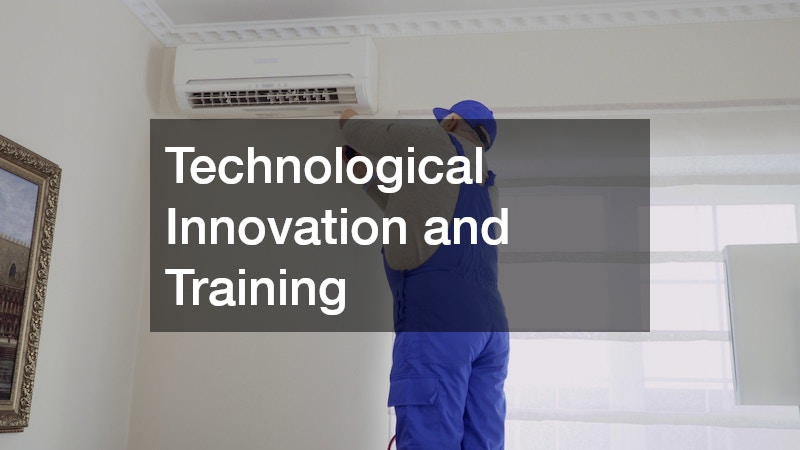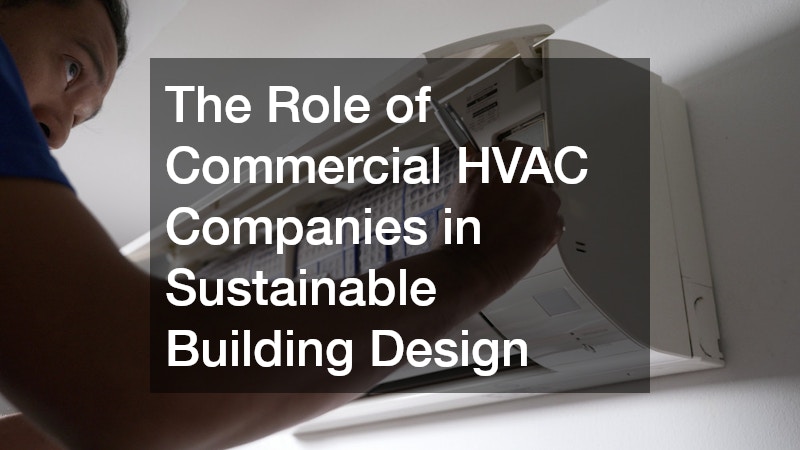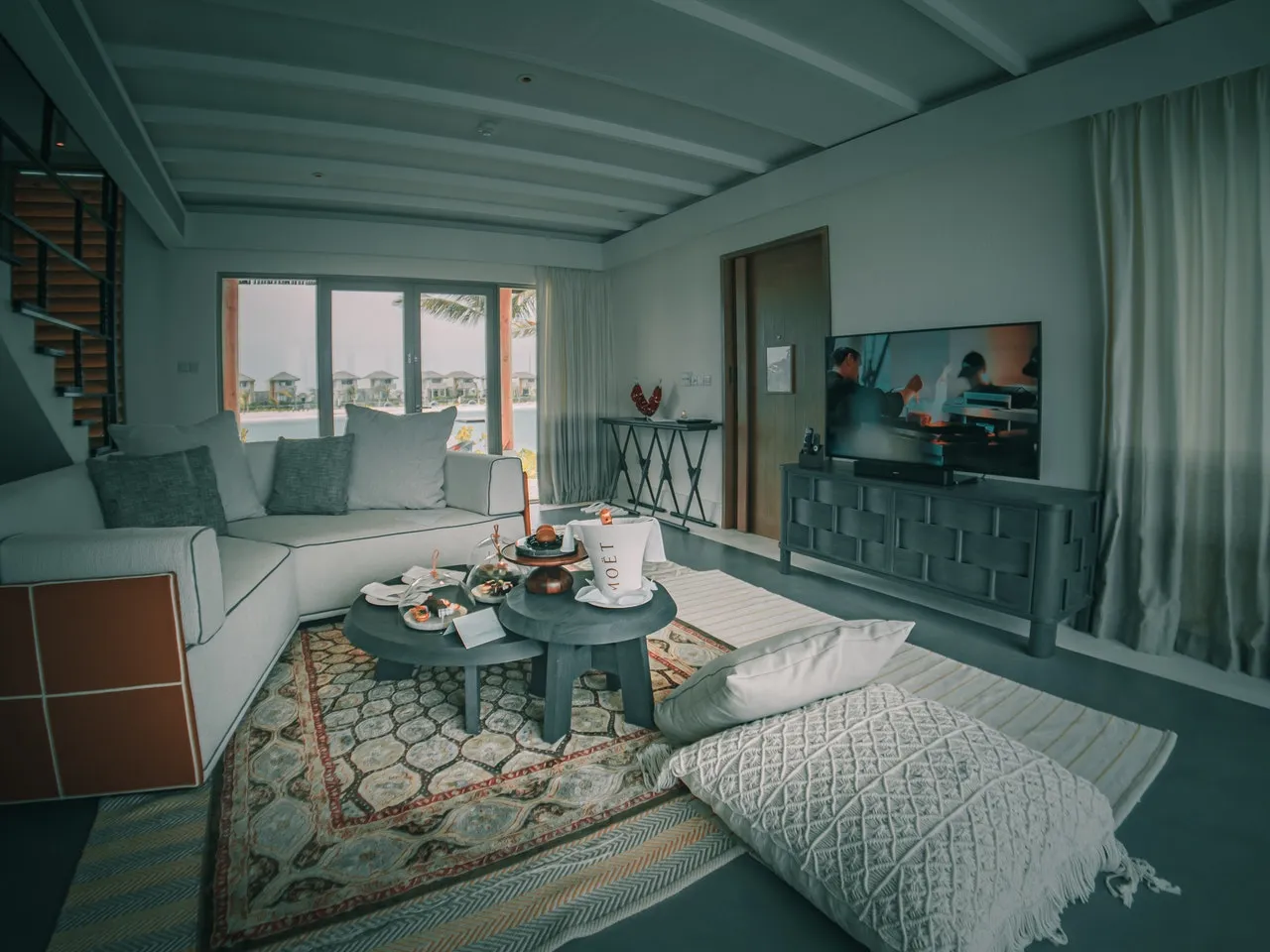In the face of mounting environmental challenges, sustainable building design has emerged as a crucial strategy for reducing the ecological footprint of commercial infrastructure. One of the most significant aspects of this design strategy is the implementation of efficient HVAC solutions, which play a vital role in reducing energy consumption and greenhouse gas emissions. As climate change concerns intensify, the demand for eco-friendly commercial buildings and innovative HVAC technologies is rapidly increasing, necessitating a focus on sustainability in design and operation.
How Commercial HVAC Companies Contribute to Sustainable Building Design
Implementing Energy-Efficient Technologies
Commercial HVAC companies are at the forefront of adopting advanced energy-efficient technologies to enhance building sustainability. These innovations include the implementation of geothermal heating and cooling systems that leverage the Earth’s constant underground temperatures to efficiently manage indoor climates.
Additionally, variable refrigerant flow (VRF) systems are increasingly used for their ability to adjust refrigerant flow to match building needs, thereby reducing energy use and improving overall system performance.
The integration of renewable energy sources in HVAC systems, such as solar and wind power, further demonstrates the commitment of commercial HVAC companies to sustainability. Utilizing smart technology, these companies can optimize energy use by ensuring HVAC systems operate only when necessary, lowering unnecessary energy demand. This effort aligns with global initiatives to reduce carbon emissions, as the HVAC industry makes strides in environmentally responsible technology.
Designing Customized HVAC Solutions
Tailored HVAC solutions are essential for meeting the specific sustainability requirements of different commercial buildings. By assessing a building’s unique characteristics and operational needs, HVAC companies can design systems that optimize energy use while minimizing environmental impact. This customization process often involves sophisticated modeling and analysis tools that predict the most efficient configurations for heating, cooling, and ventilation systems.
Custom HVAC solutions not only focus on energy efficiency but also enhance indoor environmental quality, which is crucial for tenant satisfaction and well-being. By using advanced filtration systems and controls, HVAC solutions can improve air quality and ensure optimal humidity levels are maintained across different zones of a building. This attentive design approach helps lower energy consumption and fosters a healthier indoor environment, aligning with the broader goals of sustainable building design.
Economic Benefits of Integrating Sustainable HVAC Systems
Reduction in Operational Costs
Implementing energy-efficient HVAC systems can significantly reduce operational costs for commercial buildings, an enticing incentive for building owners and managers. By lowering energy consumption, these systems help decrease utility bills, leading to substantial long-term financial savings. Across the industry, it’s observed that energy-efficient HVAC systems can reduce energy costs by up to 20-40%, translating directly into less operational expenditure.
Besides the direct financial impact of reduced utility bills, sustainable HVAC systems require less frequent maintenance, further diminishing operational costs. Advanced diagnostics and controls allow facility managers to monitor system performance in real-time, identifying inefficiencies before they escalate into costly repairs. These systems not only smooth building operations but also optimize resource allocation for maintenance tasks, contributing to lifecycle cost savings.
Increase in Property Value
Incorporating sustainable HVAC systems can significantly enhance the market value of commercial properties. Eco-conscious tenants and investors are becoming increasingly interested in sustainable buildings that offer both reduced operational costs and environmental benefits. Properties equipped with modern, energy-efficient HVAC solutions tend to outperform conventional buildings in rental markets and sale rates, due to their lower environmental impact and cost-efficient operations.
Legal incentives and green certifications, such as LEED and BREEAM, further increase property desirability by ensuring they meet global sustainability standards. Higher property valuations are often observed for buildings that incorporate state-of-the-art HVAC technology, as they appeal to tenants looking for healthier workplaces with minimized ecological footprints. Such properties are well-positioned to attract high-quality, long-term tenants, establishing themselves as leaders in the sustainable real estate market.
Challenges Commercial HVAC Companies Face in Promoting Sustainable Design
High Initial Investment Costs
While sustainable HVAC systems offer substantial long-term benefits, the high initial investment costs present a significant challenge for widespread adoption. Advanced technologies often require considerable capital outlay for acquisition and installation, which can deter potential clients concerned about upfront expenses. To address this challenge, commercial HVAC companies must emphasize the lifecycle cost benefits and potential return on investment that sustainable systems offer.
In some cases, financing options and government incentives can help alleviate the burden of high initial costs. Programs offering tax credits, rebates, and grants are crucial for offsetting these expenses, making sustainable HVAC systems more accessible to businesses. By navigating these financial instruments, companies can better position their offerings to maximize client affordability and adoption rates.
Technological Innovation and Training
The rapidly evolving landscape of sustainable HVAC technology necessitates continuous innovation and training within the industry. HVAC companies must remain at the forefront of technological advancements to offer clients state-of-the-art solutions that meet the latest standards in performance and sustainability. This requires significant investment in research and development, as well as collaboration with technology partners and institutions to push the boundaries of what is possible.
Equally important is the need for developing a skilled workforce capable of installing, maintaining, and optimizing these advanced systems. Companies must ensure their workforce is well-equipped with the necessary skills and knowledge through ongoing training and certification programs. A well-trained workforce not only enhances service delivery but also assures clients of the reliability and efficiency of their sustainable HVAC systems.
Commercial HVAC companies play a pivotal role in advancing sustainable building design, merging environmental responsibility with economic viability. By implementing energy-efficient technologies and designing customized solutions, they ensure that commercial buildings meet the evolving demands of eco-friendliness and performance. Despite challenges such as high initial costs and the need for continuous innovation, the ongoing efforts of HVAC companies are crucial for catalyzing meaningful progress toward a more sustainable future.



